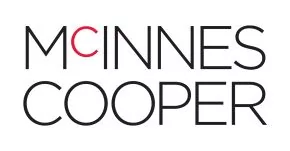Social media platforms, like Instagram, Twitter, LinkedIn, YouTube, Facebook and GooglePlus, arguably have more followers and are more closely monitored by market participants than conventional news outlets – making them an efficient and effective tool for public issuers to engage with potential customers, shareholders and other stakeholders. Recognizing this trend, the Canadian Securities Administrators (CSA) recently reviewed the social media disclosure practices of issuers. On March 9, 2017, the CSA published Staff Notice 51-348 Staff's Review of Social Media Used by Reporting Issuers summarizing its findings and expectations for reporting issuers' use of social media while meeting their disclosure obligations.
Here are the three key areas of concern the CSA identified about public issuers' compliance with their disclosure requirements when using social media, and five steps issuers can follow to ensure their use of social media complies with those requirements.
3 KEY AREAS OF COMPLIANCE CONCERN
The CSA reviewed the social media disclosure practices of 111 issuers. As a result, it identified three key areas of regulatory concern respecting compliance with the principles and requirements outlined in National Policy 51-201 Disclosure Standards (NP 51-201) and National Instrument 51-102 Continuous Disclosure Obligations (NI 51-102) when using this relatively new and growing disclosure venue:
Selective Disclosure. Social media postings aren't enough for issuers to meet the securities law requirement that material information be "generally disclosed" to the public; issuers must also disclose information through conventional channels, such as press releases and SEDAR. Moreover, the Notice identifies that issuers that disclosed material forward-looking information on social media alone tended not to comply with other disclosure obligations related to forward-looking information, such as identifying the forward-looking information as such and stating the material factors or assumptions used to develop it. As a result, this forward-looking information could be misleading even to those investors who did receive it.
Unbalanced Information. NP 51-201 provides that disclosure should be factual, balanced and include both favourable and unfavourable news. The Notice identified numerous issuer social media postings that are sufficiently promotional or unbalanced to raise compliance concerns. Specifically, the Notice identified situations where issuers: provided commentary or information on social media about their financial results that did not appear to be consistent with or contained in their continuous disclosure on SEDAR, their social media disclosure was either untrue or promotional to a degree that it risked misleading investors, or they provided links via social media to untrue or unbalanced analyst reports or other articles concerning the issuer. The Notice states that where an issuer directs prospective investors to an independent analyst's report, they should provide the names and recommendations of all independent analysts who cover the issuer in order to prevent issuers from selectively disclosing the reports of only those analysts whose views are favourable to the issuer.
Inadequate Social Media Governance Policies. The CSA observed that many issuers don't have the policies, procedures and controls to ensure that disclosure via social media complies with regulatory standards and recommends that issuers develop and/or enhance the strength of their social media governance policies to address:
- Who can post information about the issuer on social media.
- What sites (including personal social media accounts as opposed to corporate social media accounts) they can use.
- What type of issuer information (e.g. financial, legal, operational, marketing, etc.) they can post on social media.
- What, if any, approvals are required before they can post information.
- Who is responsible for monitoring the issuer's social media accounts and third party postings about the issuer.
- What other guidelines and best practices the issuer will follow.
5 STEPS TO COMPLY WITH DISCLOSURE OBLIGATIONS WHEN USING SOCIAL MEDIA
Here are five steps public issuers can follow to ensure their use of social media complies with the principles and requirements of NP 51-201 and NI 51-102:
- Policy. Develop and enforce a social media policy addressing who can post, when they can post, on what sites they can post, the applications on which they can post and whether and what approvals they require to do so.
- Training. Ensure employees responsible for an issuer's social media content are trained on the issuer's disclosure obligations as expressed in NI 51-102 and the principles outlined in NP 51-201.
- Timing. Co-ordinate the timing and content of disclosure via conventional channels, such as SEDAR and news releases, and those via social media and ensure to make disclosure via conventional methods before, not after, social media.
- Content. Ensure social media use for marketing purposes is balanced, accurate and consistent with continuous disclosure on SEDAR.
- Third Party Monitoring. Establish protocols for sharing or linking to analyst reports or third party articles, including ensuring the information in the report or article is current and accurate and disclosing the identity of the author or analyst, their relationship to the issuer and the names and/or recommendations of other analysts covering the issuer.
The content of this article is intended to provide a general guide to the subject matter. Specialist advice should be sought about your specific circumstances.



